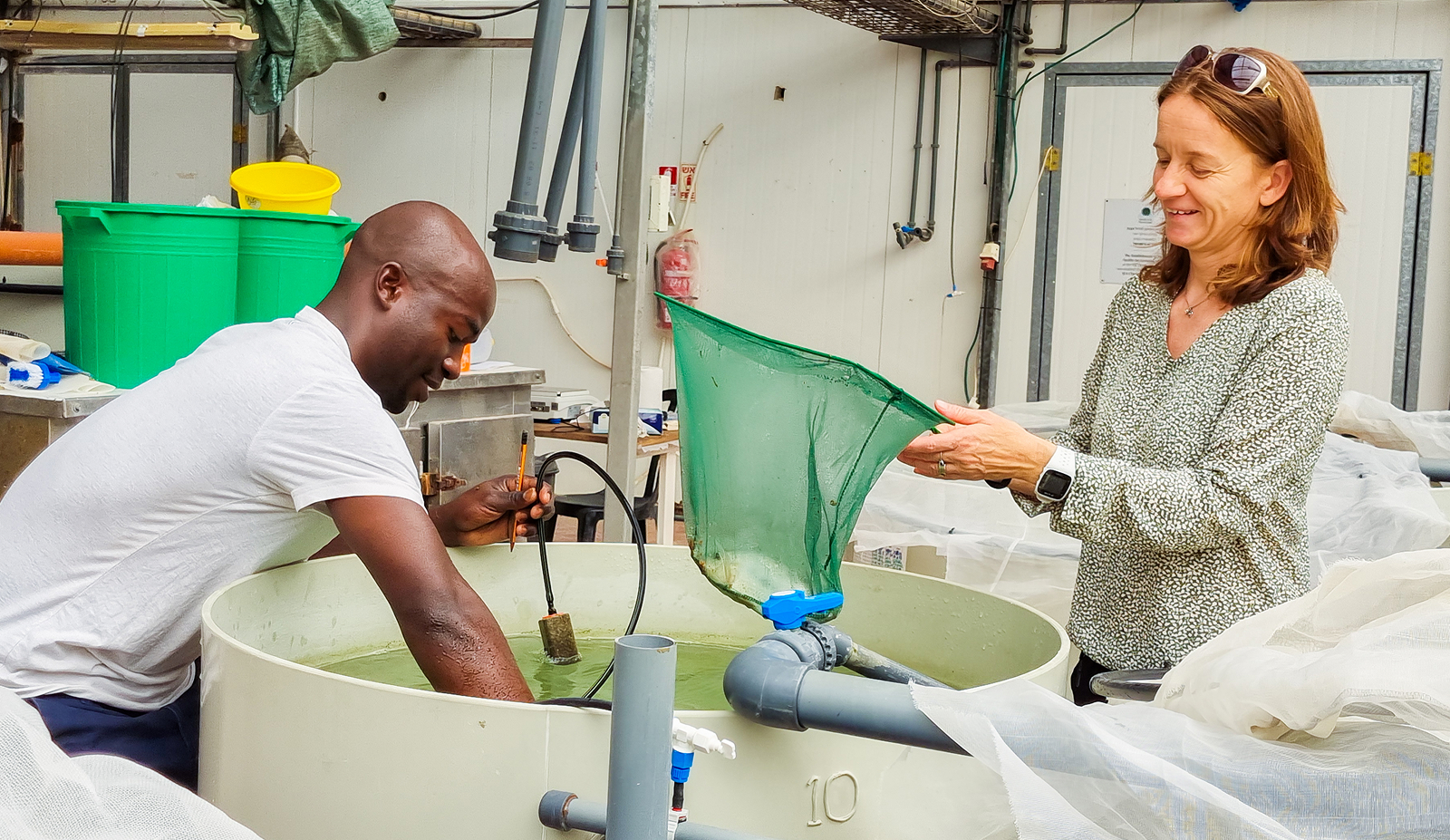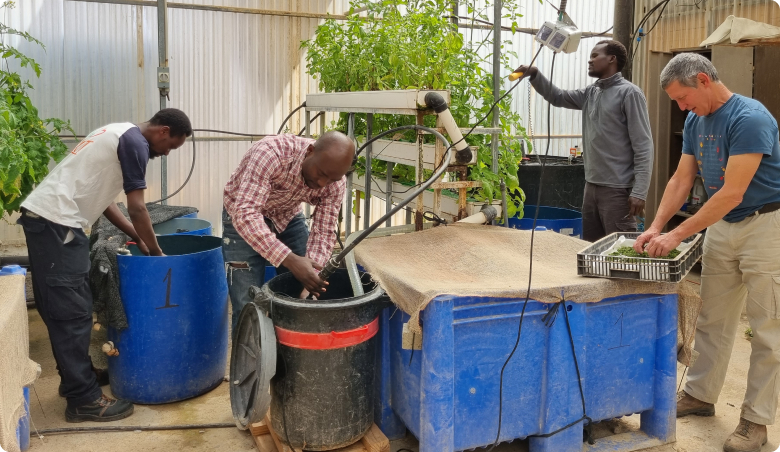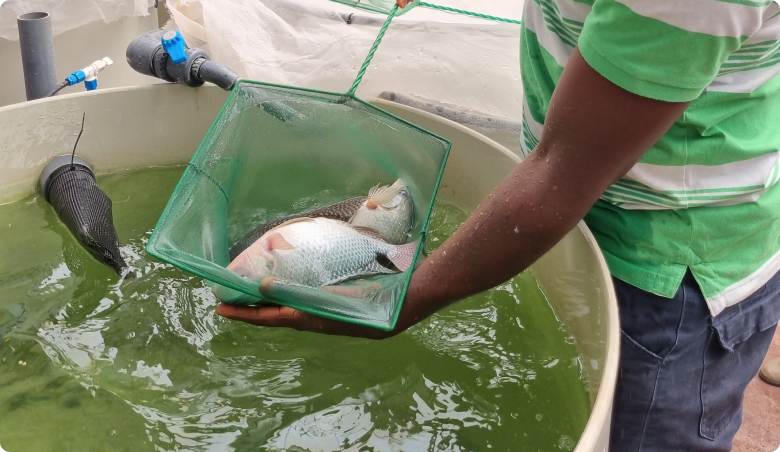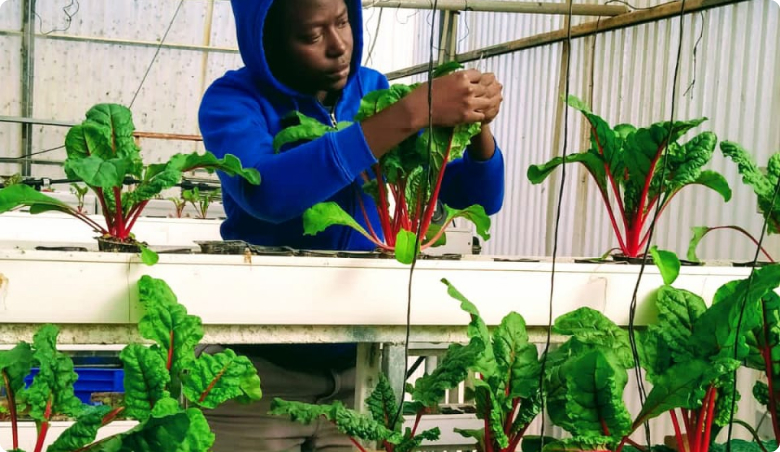The Aquaponics
Aquaponics is a food production system that combines breeding fish in tanks while the nutrient-rich water is fed to hydroponically grown plants. The greatest challenge in this system is to make fish breeding an economically viable business by reducing the cost of fish food. The Aquaponics research is progressing, mainly focusing on finding an alternative fish feed to replace the expensive commercial feed used worldwide. The guiding principle for all three research sites is to find an alternative formula that is easy and cheap to produce on site.

Aquaponics is an innovative and sustainable food production system that integrates aquaculture (the breeding of fish in tanks) with hydroponics (the cultivation of plants in water). In this symbiotic system, the nutrient-rich water produced by the fish serves as a natural fertilizer for the plants, while the plants, in turn, help to purify the water, creating a balanced and efficient cycle. This closed-loop system not only conserves water but also allows for the simultaneous production of fish and crops, making it an attractive option for sustainable agriculture.
One of the most significant challenges in aquaponics lies in making the fish breeding component economically viable. The cost of commercial fish feed is expensive and not always of high quality, makes it difficult for small-scale and even larger operations to maintain profitability. This challenge highlights the need for innovative solutions that can reduce operational costs while maintaining high productivity.
To address these challenges, we initiated the Aquaponics research in 2021 led by Dr. Gabi Banet and Sigi Winters in the Arava and Prof. Kevin Fitzsimons in the University of Arizona. The research is primarily focused on developing alternative fish feed that can replace the costly commercial options currently in use worldwide while also maintaining efficient crop production. The guiding principle behind this research is to discover or formulate a feed that is not only nutritionally adequate for the fish but also easy and inexpensive to produce on-site. By leveraging locally available resources or by-products, this approach aims to significantly lower the costs associated with fish farming, making it more accessible and economically sustainable for communities.
This research is not just about finding any alternative; it is about identifying a solution that is scalable, environmentally friendly, and adaptable to various geographical and socio-economic contexts. The alternative feed needs to meet several critical criteria: it must support the growth and health of the fish, be composed of sustainable and readily available ingredients, and be easy to produce using minimal technology or infrastructure.
The ultimate goal of this research is to make aquaponics not only a viable but a thriving model for food production that supports both environmental sustainability and economic resilience.



